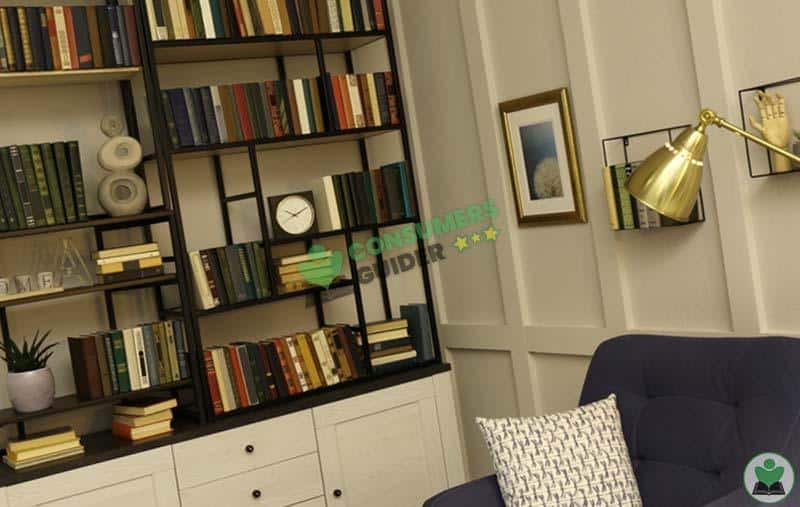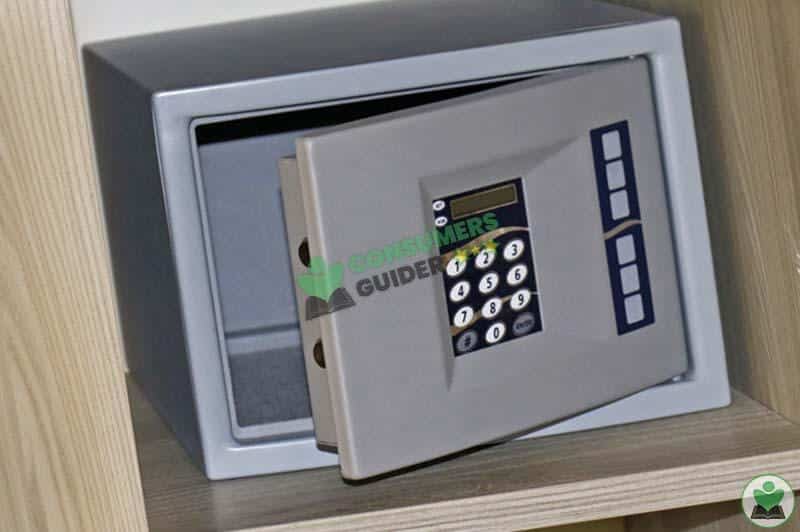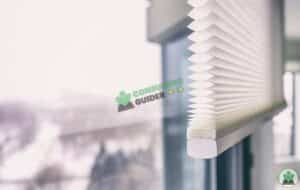The decision of where we can install a home safe often requires quite a lot of brainstorming.
Many factors come into play while deciding the best location for a safe in your house. Of course, you want your jewelry, essential documents, and cash easily accessible. However, at the same time, you also need to keep up your guard against burglars.
There may seem many places in your home to place your safe. However, it would help to weigh your choices carefully before selecting the winner. To help you reach a solid decision, allow us to address some of the best places in your homes where you can install a home safe or a gun safe. Moreover, we will also list down the worst places to put a safe in your home.
Where to Install a Home Safe?
1. In The Library
Apart from the educational treasures, a library can be a great place to hide safes. You do not necessarily need a lever that opens to a secret compartment behind the bookshelf. Unless the burglars breaking into your home are bookworms, they probably will not even enter the library.
So, to create an illusion, place your home safe on the backless shelf or cut your hole and hide it with the books on the front.
P.S – Do not put an exciting book or something that will attract attention in front of the safe. An encyclopedia, perhaps, will do the job.

2. In The Attic
Placing a good Home Safe safely in the attic also keeps it away from the reach of burglars. Setting up a ladder is the only way to get inside the attic. Once in, all you will find is the junk of the house from the past 5 to 6 years. All that mess makes it the perfect place to keep your valuables.
Hence, the attic gets a second position as the best place to install all sizes of safes.
However, the trick here is to keep the attic unorganized and untidy. So that even if the burglars knew there was a safe in your attic, they might not realize it. A glance at the clutter will make them think otherwise
3. Inside The Wall
For small and medium-sized safes, embedding/ installing them inside a wall and placing a picture frame or a small cupboard in front of them hides them from the sight of thieves. Now, your valuables are safe but also easily accessible to you.
Criminals have a tight schedule while on a burglary. They will not check behind every frame in the house to find the safe.
4. Beneath The Floor
Safes, especially those big and bulky, can be easily hidden beneath the floor. A carpet, rug, or even a tiny piece of furniture can be placed on top to conceal it from those who break into the house thoroughly.
If you are concerned about flooding or water entering the safe while washing the floor, there are very straightforward solutions to it: install waterproof models.
Note: A contractor can pick the best spot on the floor to install the safe, depending on its size.

5. In The Children’s Room
A room for a toddler or a nursery is the best place to hide small safes. A burglar will only leave frustrated if he enters a young child’s room. All he will find will be toys and gadgets lying around.
Even a teenager’s room may be given a quick search, but not much of a young child’s room. A small safe can be cleverly tucked beneath a toy chest or behind a wardrobe.
6. Inside A Fake Air Vent
Not everyone has extra space in their homes to hide a giant safe. It is when a fake air vent comes into play. These are easy to install and can hide safes in plain sight.
Most air vents now come with an RFID locking system providing easy and immediate access to your valuables.
7. Under The Sink
The space under the sink is the last place a burglar will think of searching for a home safe. A bathroom or a kitchen sink is enough to trick the trespassers.
Conceal the safe at the back of the cabinet where you keep your cleaning supplies.
Even if the spot was given a once-over, it is doubtful the burglar will scour the place.
8. Basement
For a heavy-duty home safe, hiding it in the basement bolted to the concrete floor can be one of your available options. Nevertheless, even for small and medium-sized safes, the basement is an excellent place for installation.
Of course, not everyone has a basement, so this option is limited to those with a house big enough.

A basement is a seldom-visited place with enough mess to conceal the safe. There is no definite place to hide a safe in a basement, so instead of wasting their energies there, they would turn to sites that may contain the valuables.
9. Behind A Hidden Door
Concealing a safe behind a hidden door is not cheap by any means. However, it can leave the thieves scratching their heads.
Those who know about it can easily access it, but newcomers will only perceive it as an ordinary door. A regular closet or even a cabinet door can act as camouflage for your safe.
Make sure the secret door completely blends in with the interior of your house. A door, which is an odd one out, will only attract unnecessary attention.
10. In The Corner Where Two Wall Intersect
It is a clever place to install your safe. Aligning the corner of the wall with the corner of the safe will help you hide it in plain sight. If you have a basement, placing it in the corner of the cellar is an even better choice.
Not only does it provide strong support for heavy safes, but it also keeps them accessible. Bolting it to the ground will make it impossible for anyone to carry it away.
Where Not to Install a Home Safe?
1. Inside Your Closet
A closet is the most obvious place to hide your valuable possessions. Even the most amateur burglar will first search your wardrobe, hoping they will land something priceless. In the haste of the heist, criminals may overlook smaller items, but a safe is hardly a thing that will not catch the intruder’s attention.
Placing the safe in your child’s closet may offer some concealment, but the kids are not great at keeping secrets. They may brag about it to their friends and BOOM! Your cover is blown.
However, if you own a gun safe, you can keep that in your closet as well.
2. Inside A Kitchen Cabinet
The idea of hiding a safe behind a kitchen cabinet may sound appealing to many. However, we advise giving it a second thought.

Any visitors to your home may not go to other rooms of your house. However, with the kitchen, it is a different story. Visitors may even open up your kitchen cabinets to take things out. It is just a matter of time before someone lands on your secret.
3. In Your Garage
A garage is hardly a secure place in your house. There are many ways to get around and enter the garage. A criminal would barely break a sweat trying to enter the garage premises.
Even if the intruder came looking for some power tools which could be sold second hand, they may get lucky and stumble upon your safe. And before you know it, you are robbed of the treasures you once held dear.
4. Under Your Bed
It is the oldest trick in the book to hide your valuables under your bed or your mattress. Under the bed often gets searched in the initial stages of the heist.
A mugger will flip off your bed or your mattress. Not only will you lose the cash and jewelry you hid in the safe, but your furniture will also get destroyed.
And if the bed happens to be in the main bedroom, you can bet that the bed will be thoroughly searched.
5. Under Your Stairs
Hiding the safe under the stairs may have been a good hiding spot in the past. But the trick has been given away by many movies. The area under the stairs is where burglars may check as soon as they enter your home. Just a quick inspection will give away the location of the safe.
Sometimes, there is a path from below the stairs to the basement. Going through the passage, it is doubtful they will not notice a substantial safe sitting in the corner.

Things To Consider While Hiding A Safe In Your House
You may live in the most secure area of a city, but on a bad day, any unfortunate event can occur. It would help if you always were prepared for a break-in.
Your first step was to buy a solid safe. But even that can be penetrated if it falls into the hands of an “Expert Thief.”
So, be cautious about where you will be hiding the safe. Consider these three aspects before picking a place to hide your safe vault: secrecy, durability, and ease of access.
We have already highlighted the spots that are best to keep your safe hidden in the nooks and corners of your house.

1. Secrecy
Pick the spot which is most unlikely to be noticed by the intruders. Hiding the safe in plain sight is possible if you are clever enough. Try covering it with your furniture, walls, doors, rugs, or carpets, and you will be prepared for the worst.
2. Save It From The Natural Factors
The primary purpose of a safe is to keep your belongings safe under any circumstances. So, while considering a place to hide the safe, ensure that the safe does not get damaged by fire, flood, or any other natural tragedy.
Make sure the safe can be easily extracted in case your home gets hit by a natural disaster.
3. Easily Accessible
You may hide the safe in your backyard buried under the pile of earth. But are you willing to dig up a hole every time you need to get cash, jewelry, or important documents out of it?
The location of the safe must be easily accessible to you. You never know when an emergency will arrive.
If the safe is not easily accessible, you may not use it frequently. It only makes the safe more vulnerable. How will you ever know if water from a leaking pipe is slowly flooding your safe?
Frequently Asked Questions
Should I bolt my safe to the floor?
Yes, always bolt your safe to the floor.
The FBI reports that an average burglary occurs in 8 to 12 minutes.
You spent a good fortune on buying a solid safe. It will take hours for the intruder to break into it. They might even make a lot of noise trying to undo the lock, which only alerts the house members and their neighbors.
Hence, the thieves make up their minds to take the safe with them and break it open at their convenience.
Do thieves steal safes?
Yes, a thief can steal a safe. Most break-ins are smash and grabs. Whatever a thief can get their hands on in 8 to 10 minutes is what they will take with them. A safe always looks appealing to a robber. They have high hopes of finding something valuable inside it.
So, a criminal mind decides to take the safe away with him, excited he may have gotten a jackpot!
What do you put under the safe on concrete?
You can use the following material to put beneath the safe:
• Ice Hockey Pucks
• Stall Matting
• Multi-Purpose Rubber Mat
• Vinyl Flooring
• Sheet of Plywood
Never put a safe directly on concrete!
Concrete is no different from a sponge in absorbing and releasing water. If you live near a sea or have a humid environment, extra moisture will be trapped under the safe.
With time, the integrity of the safe will be compromised. The moisture in the concrete will cause the iron of the safe to rust away slowly.
Should you put a safe in the basement?
Yes, putting a safe in the basement of your home is an intelligent way of hiding it from intruders.
Is it OK to put a safe in the garage?
No, it is not OK to place a safe in your garage.
If you had been locked out of your garage, you would have known how easy it is to find a way back in. With a bit of tweaking, a garage door will stand wide open.
Also, whenever you park your car or leave the garage with your vehicle, any passerby can quickly peek into your garage. A home safe in a garage is bound to raise curiosity in them. Once an opportunity lands, someone will be trying to break in.
Where can I hide a big safe?
A big safe can easily be hidden behind a mantle.
The robbers will be in a hurry, and it will hardly cross their minds to check behind a mantle. Even if the thought occurs to them, most will decide against doing the labor of removing the cover.
Why take the risk? With every passing minute, the chances of being caught are only higher. They may be better off in the main bedroom.
Summing Up
Getting an expensive safe does not guarantee that your belongings are protected. Choosing a place to hide it in your home is also very important. Always think out of the box. Look at your house from a mugger’s point of view.
Placing your safe in a hard-to-find spot reduces the chances of a successful heist. The possibilities of camouflaging the home safe are based solely on your smartness. So, take your time in making the decision.




